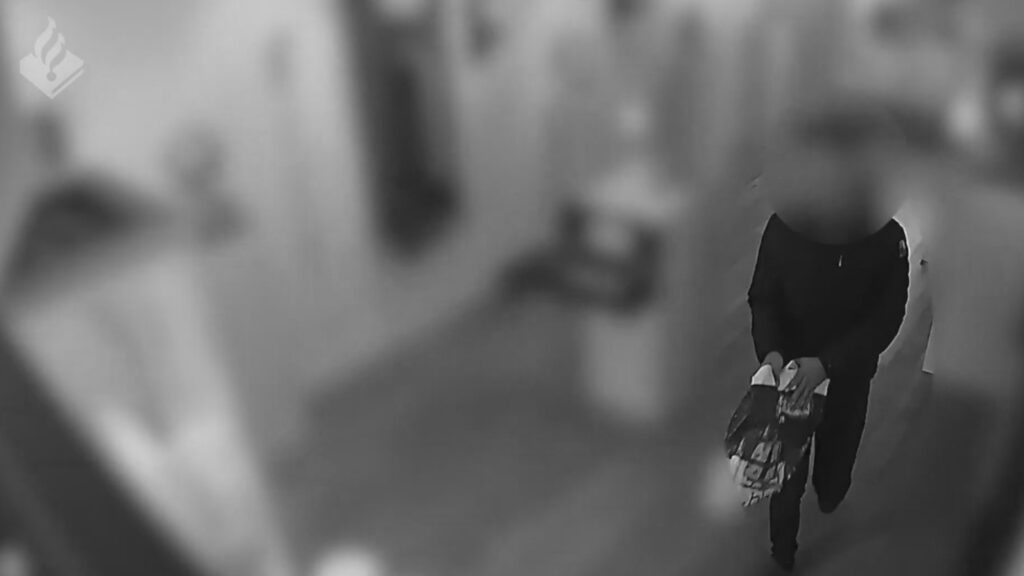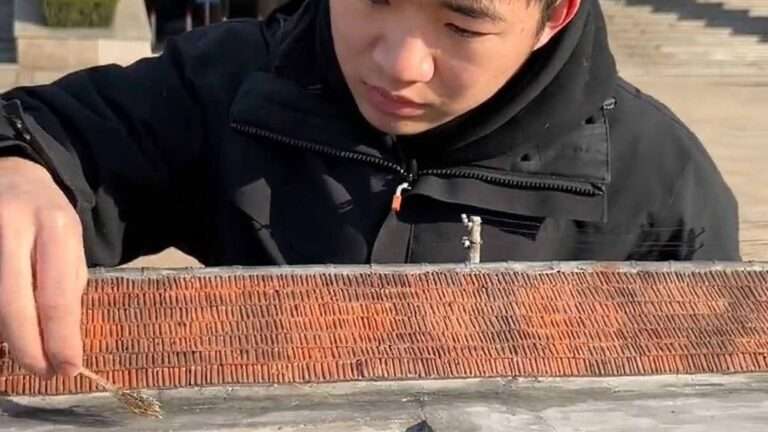This is the moment a blonde Dutch police officer gives an ultimatum to a teenager who tried to sell a valuable stolen antique clock by showing him she has a pixelated video of the incident, and warning he has a week to give himself up before it is shared unpixelated.
And the strategy worked.
Faced with the threat of ending up online forever over the bungled attempt to sell the stolen clock, the teenager opted for the lesser evil, and turned himself in at the police station before the deadline to face the music over the theft.
Many countries in Europe have strong restrictions on the use of pictures and videos of people wanted in connection with crimes, which are in place because of local privacy laws. But the Dutch police strategy avoided all the bureaucratic paperwork by simply ‘threatening’ to publish it.
The youngster was caught out because he made the mistake of trying to sell the valuable clock to the antiques dealer who had actually sold it to the man it was stolen from.
Realising straightaway that there was something wrong, he had tried to quiz the youngster who had then run off.
The unnamed suspect, reportedly around 18 years old, had gone to the shop in the Dutch capital Amsterdam with the French travel clock on 23rd May this year.
It had been built in 1870 and sold to an 84-year-old man several months earlier by the same antiques dealer.
The elderly victim is unsure when exactly the clock was stolen or by who because he did not immediately notice it was missing.

When they failed to track down the crooks, they decided to release the pixelated footage with the threats to unpixelate it, and the ploy worked as the suspect gave himself up on 7th July.
Amsterdam Police Department spokesperson Marijke Stor told Newsflash: “The suspect actually reported to the police.
“This shows that giving suspects the opportunity to report to the police first works in some cases.
“We may only show images of suspects if the Public Prosecution Service (OM) has given approval. The Public Prosecution Service also determines on what conditions the suspects are shown and such conditions may include being given the opportunity to give themselves up.
Stor added: “The Public Prosecution Service always considers whether there are other ways of identifying a suspect before using this method.

“Several factors come into play when deciding whether this is an option, such as the seriousness of the crime or the suspected young age of a suspect.”
Stor told Newsflash: “Showing blurred images first is a method that is being used more often. We have done the same in a number of other cases.”
The police also took down social media posts featuring the blurred video after the man turned himself in.
To find out more about the author, editor or agency that supplied this story – please click below.
Story By: Lee Bullen, Sub-Editor: Michael Leidig, Agency: Newsflash
The Ananova page is created by and dedicated to professional, independent freelance journalists. It is a place for us to showcase our work. When our news is sold to our media partners, we will include the link here.




